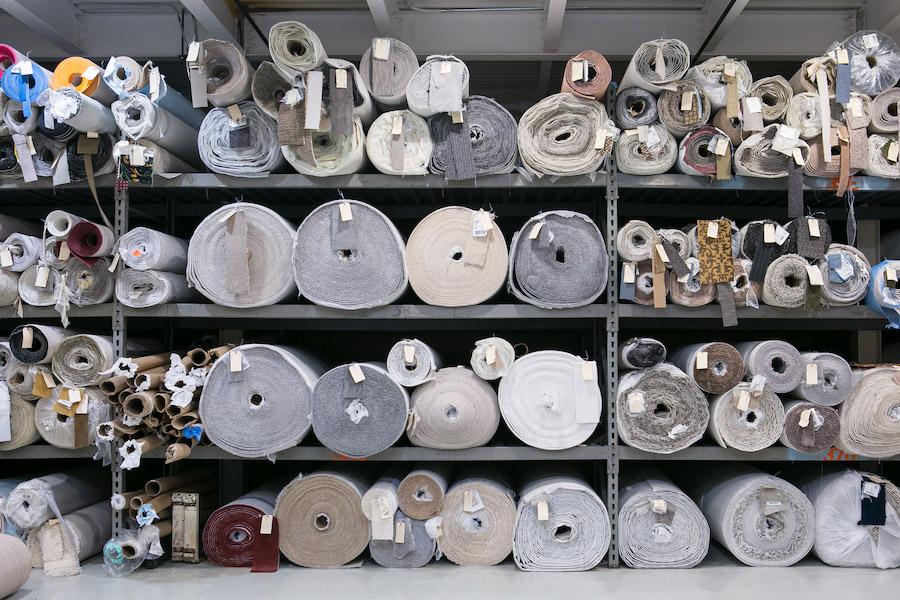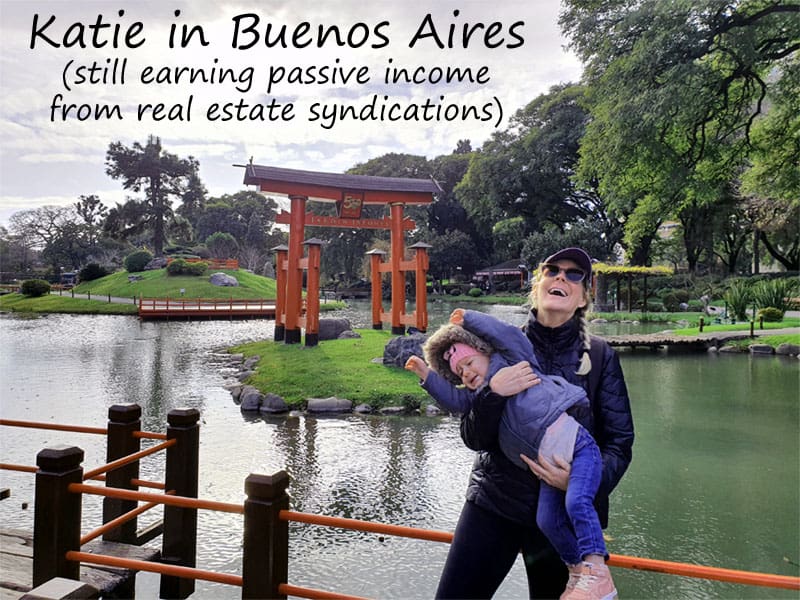The Big Picture On Can Landlords Charge Tenants to Replace the Carpets:
-
- Carpets are subject to normal wear and tear, and landlords need to consider this as an eventual expense. However, tenants can also cause damage to carpets. Landlords should know the difference between wear and tear and damage in order to know when to charge tenants to replace carpets.
- If it’s established that the tenant is liable to pay for damages, landlords must follow a step-by-step process to ensure that their claim is respected by any court.
- Landlords are advised to familiarize themselves with their state’s specific laws regarding security deposits and tenant charges to avoid legal issues and ensure they are acting within the law.
Disclaimer
The information provided on this website is for general informational purposes only and should not be construed as legal, financial, or investment advice.
Always consult a licensed real estate consultant and/or financial advisor about your investment decisions.
Real estate investing involves risks; past performance does not indicate future results. We make no representations or warranties about the accuracy or reliability of the information provided.
Our articles may have affiliate links. If you click on an affiliate link, the affiliate may compensate our website at no cost to you. You can view our Privacy Policy here for more information.

Carpets don’t stay pristine forever. Often, landlords have to replace them between every single tenancy.
But should landlords always pay for replacing ruined carpets? Can they ever charge tenants to replace them?
Here’s what landlords need to know about carpets, security deposits, and charging tenants.
Damage vs. Normal Wear and Tear
Over time, carpets inevitably suffer from “normal wear and tear.” This includes discoloration and thinning in areas that see the most foot traffic.
By law, landlords may not charge tenants for normal wear and tear. If the carpet is just dirty then you as the landlord must pay for it to be cleaned.
Damage, however, is typically caused by a single action or incident, or repeated misuse. Here’s a table that explains the difference between the two:
| Aspect | Normal Wear and Tear | Damage |
|---|---|---|
| Definition | Gradual deterioration that occurs naturally over time with normal use. | Excessive harm that exceeds normal usage patterns. |
| Examples | – Minor stains from repeated use | – Large stains from spills or pet accidents |
| – Frayed edges or worn patches due to consistent foot traffic | – Torn or ripped areas from misuse | |
| – Fading or thinning over large areas due to age and sunlight exposure | – Burns from cigarettes or irons | |
| Tenant Responsibility | Typically, none; falls under landlord’s maintenance obligations. | Tenant may be charged for repairs or replacement. |
| Landlord Actions | Landlord replaces or repairs as part of routine property maintenance. | Landlord can deduct costs from security deposits or bill tenant directly. |
| Considerations | Usually does not affect the habitability of the dwelling. | May affect habitability or rental value of the property. |
With serious damage or stains, the landlord can charge the tenant for replacement or cleaning costs. Should a tenant refuse to pay, you can withhold part of his/her security equivalent to the amount needed to replace or clean the carpet.
When Landlords Should Pay for Carpets
Under normal circumstances, the landlord should pay for regular carpet cleaning services. These costs are part of the standard turnover expenses. Landlords should budget for these when calculating rental cash flow to avoid surprises.
In many cases where security deposit disputes move to court, landlords lose. Landlord-tenant laws prohibit rental property owners from withholding security deposits to cover standard carpet cleaning.
If the carpet isn’t permanently damaged, the tenant shouldn’t bear the cost of replacing it. Therefore, any carpet cleaning/replacement cost due to normal wear and tear is the landlord’s responsibility, not the tenant’s.
When to Charge Tenants for Carpets
The tenant should pay for cleaning or replacement if the carpet is stained or otherwise damaged beyond normal wear and tear. In this case, the landlord can deduct the cost from the tenant’s security deposit.
Damage from pet urine, deep stains, paint, or oil requires extra hours and resources to clean. In this case, the cleaning cost often exceeds the standard cost of a routine carpet cleaning. Thus, the landlord is justified in withholding part of the security deposit to cover the additional cost. However, the landlord must prove that the tenant caused the damage.
Some landlords include clauses specifically addressing carpet cleaning or replacement on the lease agreement to avoid security deposit disputes when the tenant is moving out. This ensures that the tenant is fully aware of what is expected of them before signing the lease. However, the landlord shouldn’t deduct the basic cleaning fee from the security deposit if the tenant gets the carpets cleaned professionally before vacating the premises.
Note that the rules on security deposit deductions differ from one state to another. As a landlord, you should familiarize yourself with the laws touching on this in your state to avoid being close to the law. Alternatively, you can hire a property manager to relieve your burden.
(article continues below)
What If the Tenant Objects?
When tenants move out, the landlord must either return their security deposit in full or provide them a written breakdown of all deductions. Landlords must do this within a certain number of days, which varies by state.
If a tenant objects to a deduction from their security deposit, they must file in small claims court. There a judge will decide whether to uphold the security deposit deduction or force the landlord to refund it, perhaps with penalties or covering the tenant’s legal fees.
So, pick and choose your battles carefully when deducting from a security deposit.
How to Calculate Security Deposit Deductions for Carpets
Since a security deposit isn’t part of the rent, you need to follow the right protocol in justifying the reason you withheld it. Follow these steps when you deduct carpet damages from the security deposit.
1. Take Photos at Move-In & Move-Out
Before a new tenant moves in, you should document the condition of the property. That includes both taking photos (with time stamps!) and filling out a Move-In/Move-Out Condition Statement (which we include in our lease agreements).
Provide copies of these photos to the tenant, to demonstrate transparency.
Upon move-out, repeat the process, with the same condition statement and taking new photos. These pictures are compared to the state of the house when the tenant is moving out to determine the extent of the damage caused by the renters, if any.
2. Document the Carpet’s Life Expectancy
The life expectancy of many carpets is about ten years. You ought to keep tabs on the carpet’s life expectancy to know when it is due for replacement. The tenant is not responsible for replacement of the carpet if it has outlived its life expectancy. Be honest about this when drafting the lease agreement to avoid disputes in the future.
(article continues below)
3. Calculate the Total Security Deposit Deduction
If irreparable damage was caused by the tenant then he or she has to pay for a replacement. However, they don’t bear all the costs.
You must factor in the age of the carpet and its remaining useful years during the calculations—so, exactly like depreciation. The tenant only pays an amount equal to the value of the carpet for the remaining useful years. Also, this is based on the amount you had spent purchasing the carpet.
Here’s an example table for a carpet that costs $1,500, computed using straight line depreciation:
| Year | Depreciation per Year | Accumulated Depreciation | Remaining Value |
|---|---|---|---|
| 1 | $150 | $150 | $1,350 |
| 2 | $150 | $300 | $1,200 |
| 3 | $150 | $450 | $1,050 |
| 4 | $150 | $600 | $900 |
| 5 | $150 | $750 | $750 |
| 6 | $150 | $900 | $600 |
| 7 | $150 | $1,050 | $450 |
| 8 | $150 | $1,200 | $300 |
| 9 | $150 | $1,350 | $150 |
| 10 | $150 | $1,500 | $0 |
So, if a the tenant damaged the carpet on its ninth year of life, they’re only liable to pay $150.
Basing damages on depreciation is a great way to be fair, yet some states may require tenants to pay for the whole purchase amount regardless of the carpet’s lifespan. If you need to know if you belong in those areas, please consult your local or state laws.
However, the IRS indicates that carpets only have a 5-year lifespan for tax purposes using General Depreciation Systems and nine years with the Alternative Depreciation System. That can serve as a general guide, but just to be sure, consult your local laws.
4. Send the Security Deposit Deduction Breakdown
If you deduct part of the tenant’s security deposit to pay for damages to the carpet you must send a written notification, before the expiration of the agreed period to refund the deposit.
This notification should specify the amount being withheld, the damages, pro-rata calculation breakdown, and the remaining balance to be refunded (if any).
Final Word
Whether a landlord can charge tenants for carpet replacement or cleaning depends on the cause of the problem and the condition of the carpet at the start of the rental agreement. As a landlord, you should include carpet damage explicitly in your lease terms to prevent disputes.
Remember, “normal wear and tear” is gradual. Damage is caused from a single incident or misuse.
If your tenant threatens to take you to court over a security deposit deduction, consider mediation or negotiating a compromise. Settling the matter fast allows the tenant to move on and the landlord to focus on fixing the property in readiness for another tenant.♦
Have you ever charged a tenant for carpets? What happened?



























I think it depends on the situation. If the tenants ruins the carpet, then they should to pay for it!
True Heidi!
There is a lot of grey area when you have to charge a tenant for costs that aren’t acceptable wear and tear especially the cost of carpets.
For instance you can’t really charge a tenant for the replacement cost of the carpet if he is living in your unit for more than 4 years which is useful life as per the IRS depreciation schedule.
For landlords, it then becomes important that you carfully put charge for damages and have a solid documentation backing up the incident of the damage.
What if the carpet is 21 years old? My dog ripped a hole about 6×6 in it. Am i responsible for paying for all new carpet when it has over doubled its life span?
That’s 4 to 5 times the useful life per the IRS. The carpet is $0 valued.
Also, even if it weren’t, a piece of carpet from a closet could repair the hole, and a near match used in the closet. Much less than a total replacement.
I moved into an Apartment in Grand Blanc about 5 years ago. The carpeting in here is not cleaned between tenants. I have ruined 2 brand new vacuum cleaners since. Now the old carpet in my apartment is all ripped. Grand Meadows aka: GLD Properties says it’s my responsibility to pay and clean for carpet cleaning. It’s so dirty the pad underneath is turning to dust. I did not rip the carpet. It’s so old parts are thinning. I’ve asked for new carpet or just cleaning. I am ignored.
I as a landlord don’t have to pay for it to be cleaned. If the tenant leaves the property dirty it is their responsibility to clean it or money from the deposit will be used to get it clean.
True Marc. Sometimes there’s a thin line between dirty carpets and normally worn carpets however!
how about living in a apt for almost 10 years….and when you first moved in…they where already old and used…..and then them trying to say they found cat pee stains UNDER the carpet…with known water damage from pipe issues in the past damage adding to the moldy smell….and they did nothing about and never came in to ever clean carpets…… with no proof it was from your own pet?…
That would likely fall under “normal wear and tear” rather than damage.
Yes, definitely landlords should replace the carpets themselves whenever there is a new agreement. Or if the tenants wish to change them themselves, it’s really up to them. Landlords shouldn’t charge the tenants unless they damage the carpets.
Be careful about letting tenants change the carpets themselves, they may put in carpets you don’t like, or do a shoddy job installing them.
Well, carpets should be charged later when lease agreement is being renewed as Tenants have used them.
Can the landlord charge for the whole carpet regardless of the size of the sq footage of that carpet?
ie small hole on a step otherwise carpet looks great. Landlord wants to change and charge for the price of carpeting the whole 2500 sq ft floor
If it’s a step, then the more likely scenario is the landlord charges to replace the carpet on that step, or on the staircase, but not the entire unit.
Our landlord pulled carpet up to reveal a stain under the carpet when they couldn’t find anything else wrong the
carpet was perfectly cleanit was new carpet we lived there one year carpet was fine
Can you charge for urine caused by cat’s ? I had a tenant with 2 cat’s move out. I had a professional carpet cleaner come and he said the urine had gone into the pad and sub floor. He can’t get out the smell. I am trying to get the smell eliminated. The tenant is threatening me and saying the carpet was old anyways and she’s sorry she can’t control her cats. The carpet is really not the issue the smell is. Can I charge for kilz and new carpet pad and labor and not the carpet? I was unable to rent out my house because of the smell.
You can try withholding the money from the tenant’s security deposit. They may take you to court over it, and then it just comes down to what the judge decides. Probably worth trying however. Best of luck Laurie!
Professionals can remove the urine smell. Then seal the wood. Then replace the pad and enzyme clean the carpet if not physically damaged. Landlords have a responsibility to mitigate the expense, and to document every dollar spent on the repair.
My tenants ripped out all of the carpet in the apartment prior to moving out without notifying me at all. The carpet was not new when they moved in but it was in good shape. I might add that they had a cat. The cost to replace the carpet exceeds the amount of their security deposit. Do you think I can keep the deposit and apply it to the carpet replacement?
In that situation you can probably deduct the cost from their security deposit. Just keep all your documentation, including photos and invoices, to present in court if they challenge you.
Is a landlord required to charge the depreciated value for damage done to an old carpet. Or can the charge for the costs of a new carpet?
If the tenant caused damage, not just normal wear and tear, then typically the landlord can deduct the cost to replace that carpeting.
Can an apartment landlord charge the renter for the property Asset Protection?
Renters already have to buy renter’s insurance to cover our inside assets.
But, the property Asset Protection is normally an expense that the landlord has to pay, as it covers the outside of the building, or common areas.
I owned a rental company in Texas, and both the HOA and the rental properties had to pay their own asset protection.
We had a renter leave the carpet filthy and with large stains. The carpet is about 9 years old but was in good condition otherwise. I hired a company to clean and remove the stains. Most but not all of the stains came out. I deducted the amount of the carpet cleaning from the deposit and the tenant is disputing this stating that she should only have to pay $200 because of the age of the carpet. She also said I should have discussed the cost with her before I hired the company to clean it. They left the apartment filthy and I also had to hire someone to do the general cleaning as well. Any advice on how to proceed? I have pictures from before she moved in, after she vacated, and after the cleaning. I have the receipt for the cleaning.
If the renter wants to escalate the dispute, she can file in small claims court. In that case, just bring all your documentation to show the judge. Alternatively, she may decide it’s more trouble than it’s worth.